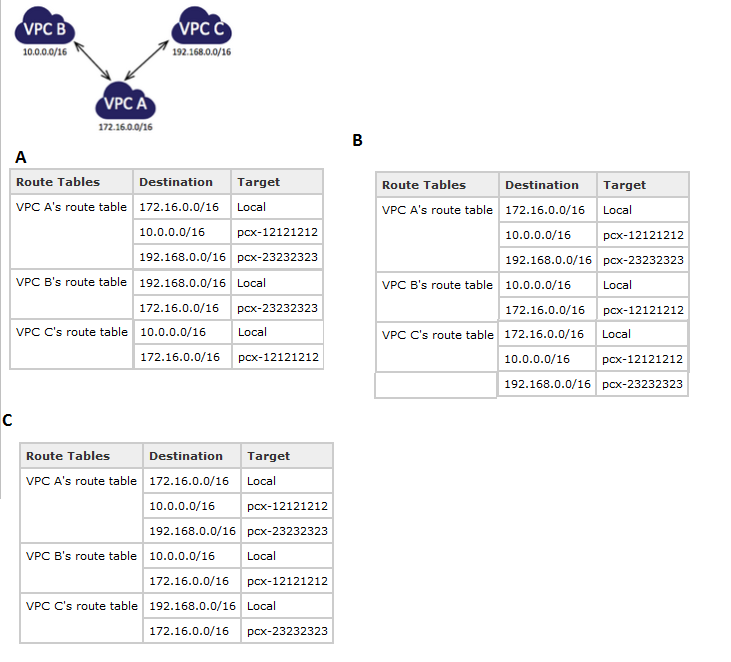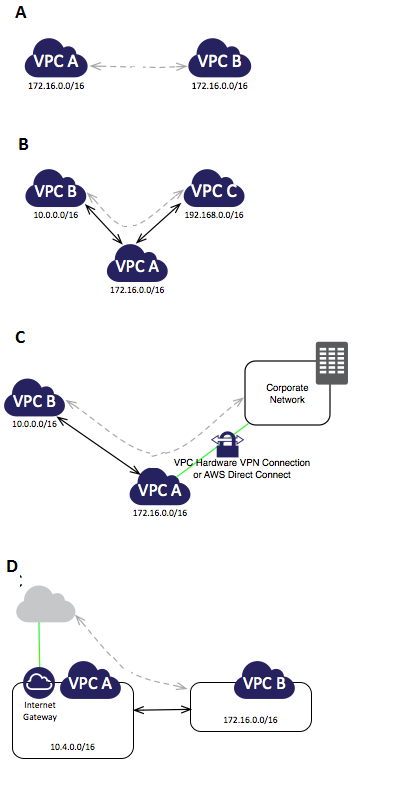Microsoft Certified: Azure Solutions Architect Expert Certification Questions and Answer (Dumps and Practice Questions)
Question : Which Azure PowerShell cmdlet should you use to change the size of a virtual machine?

1. Set-AzureVMSize
2. Set-AzureService
3. New-AzureVMConfig
4. The virtual machine size can only be changed through the management portal.
Correct Answer : 1
Explanation: Virtual machine sizes can be changed in the management portal or using the Set-AzureVMSize cmdlet. They cannot be changed to a size that does not support the
number of data disks currently attached.
Question : You work for a company named ABC.com. Your role as Cloud Administrator includes the
management of the company's public and private cloud infrastructure.
The company has a Windows Azure subscription. Two virtual machines (VMs) hosted on
Windows Azure run a custom application named CorpApp1.
Users access the CorpApp1 application by connecting to a VM named TK-FrontEnd1. TKFrontEnd1
connects to a database on the second VM named TK-BackEnd1.
The two VMs are located in a subnet named TK-AppsNet1 which is part of an Azure virtual
network named TK-AzNet1.
You notice increased traffic between TK- FrontEnd1 and TK- BackEnd1. You are concerned that
the amount of network traffic could affect other VMs on TK-AppsNet1. You want to move the two
VMs to a separate subnet.
You need to minimize the time that CorpApp1 is offline.
Which of the following would be the best solution?

1. Move the VMs to an on-premise network by using a site-to-site VPN.
2. Divide the TK-AppsNet1 subnet into two subnets.
3. Move the VMs to a new subnet in the TK-AzNet1 virtual network.
4. Move the VMs to a new Azure virtual network.
Correct Answer : 3 Exp:
Question : You work as a network administrator at ABC.com. The company has offices in New York, Atlanta and Boston. Each office has a data center. All three offices are
connected by a Multi-Protocol Label Switching (MPLS) network. The company has a Microsoft Azure subscription.
You want to create a connection between Azure and the three offices by connecting Azure to your MPLS network. Which type of network connectivity should you configure?

1. Multi-site
2. Site-to-site
3. Peer-to-site
4.
5. VNet-to-VNet
Correct Answer : 4
Explanation: Azure ExpressRoute lets you create private connections between Azure datacenters and infrastructure which is on your premises or in a colocation environment.
ExpressRoute connections don't go over the public Internet and offer more reliability, faster speeds, lower latencies and higher security than typical Internet connections. In some
cases, using ExpressRoute connections to transfer data between on-premises systems and Azure can also yield significant cost benefits.
With ExpressRoute, you can establish connections to Azure at an ExpressRoute location, such as an Exchange provider facility or directly connect to Azure from your existing WAN
network, such as a multi-protocol label switching (MPLS) VPN, provided by a network service provider.
Related Questions
Question : You work for a company named ABC.com. Your role as Cloud Administrator includes the management of the company's Microsoft Azure subscription.
The company has a web application hosted in Microsoft Azure cloud services. The web application is named TK-Portal and is accessed using the URL portal.ABC.com. The web
application is used by company employees and customers around the world. Two cloud service medium instances are used to host the web application. The web application
uses the Azure Queue storage service. Following a company marketing campaign, you are expecting increased web application usage.
You need to ensure that the web application remains responsive during periods of increased traffic.
Your solution must minimize hosting costs and administrative overhead. Which of the following solutions should you recommend?

1. Configure geo-redundant storage for the Azure storage account.
2. Configure an additional endpoint for the web application.
3. Configure auto-scaling based on queue length for the cloud service.
4. Increase the cloud service instance count to three.
5. Configure the instances as large instances.
Question : You work for a company named ABC.com. Your role as Cloud Administrator includes the management of the company's Microsoft Azure subscription.
The company has a web application hosted in Microsoft Azure cloud services. You have one cloud service named ABCCorpService. Two instances of the service host the web application
with a role named ABCCorpWebRole. You want to increase the instance count of the cloud service to cope with increased web application demand.
Which of the following PowerShell cmdlets should you use to increase the instance count?

1. Add-AzureWebRole
2. Set-AzureService
3. Add-AzureWorkerRole
4. Set-AzureRole
5. Set-AzureDeployment
Question : Your role of Systems Administrator at ABC.com includes the management of the company's virtual infrastructure. The company has two offices. Each office has a
datacenter. Each datacenter has a high-bandwidth Internet connection. There is no dedicated WAN (Wide Area Network) link between the offices.
The company has virtual machines running in an on-premise virtual environment in each datacenter. The virtual environment consists of Windows Server 2012 Hyper-V host servers.
You want to create a site-to-site VPN connection between the two offices. You plan to configure a Windows Server 2012 server running Routing and Remote Access
(RRAS) in each datacenter to function as a VPN server. You need to determine the IP addressing requirements for the VPN solution. You want to use the
minimum number of IP addresses. Which of the following configurations should you use?

1. One public IPv4 address per server.
2. Two contiguous public IPv4 addresses per server.
3. Two contiguous public IPv6 addresses per server.
4. One private IPv6 address per server.
Question : Your role of Systems Administrator at ABC.com includes the management of the company's private and public clouds. The company has a Microsoft Azure subscription.
The company has a Development department. Developers have created an application that runs on two servers. The application on one server needs to
call a service on the other server by IP address. You plan to host the application on Azure virtual machines (VMs). You have configured two VMs on a single subnet in an
Azure virtual network. You need to configure the two VMs with static internal IP addresses. How should you configure the VMs?

1. By running the New-AzureVMConfig PowerShell cmdlet.
2. By running the Set-AzureSubnet PowerShell cmdlet.
3. By modifying the VM properties in the Azure Management Portal.
4. By modifying the IP properties in Windows Network and Sharing Center.
5. By running the Set-AzureStaticVNetIP PowerShell cmdlet.
Question : Select the correct statment
A. Azure Websites are created under the *.azurewebsites.net shared domain.
B. Adding deployment slots to a website requires that the website be in Standard mode.
C. A website has an implied production deployment slot. Up to four additional deployment slots can be added using any name, as long as the name is unique within the website.
D. Azure WebJobs provides a way to run background tasks in an Azure website. WebJobs can be configured to run On-Demand, Continuously, or as a Scheduled task.

1. A,B,C
2. B,C,D
3. A,C,D
4. A,B,C,D
Correct answer: 4
Question : Select correct statement from below
A. An Azure website can have multiple custom domains associated with it.
B. Azure Websites support Server Name Indication (SNI) SSL and IP-based SSL for websites with a custom domain
C. The Cross-Platform Command-Line tools for Azure can be run on Windows, and Linux but not on Mac
D. An Azure Website site setting is where you can configure language versions for .NET Framework, PHP, Java, and Python

1. A,B,C
2. B,C,D
3. A,C,D
4. A,B,D
Question : Select the correct statement
A. Azure Websites provides two categories of diagnostic logs: application diagnostics and site diagnostics.
B. There are three site diagnostic log files available: Web Server, Detailed Errors, and Failed Request
C. When enabling application diagnostic logging, you must specify the logging level, which can be Error, Warning, Information, or Verbose
D. Azure Website backups can not be used to back up website configuration, file content, and databases

1. A,B,C
2. B,C,D
3. A,C,D
4. A,B,D